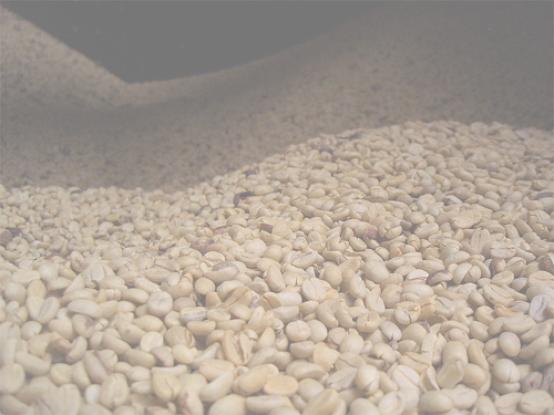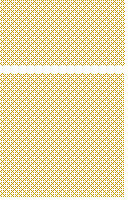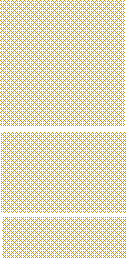

METHODS
PARTNERS
Catholic Relief Services/Nicaragua
Local Nicaraguan agricultural NGOs:
CECOSEMAC (Central
de Cooperativas de Servicios Multiples
Aroma del Cafι) and ADDAC (Associaciσn
para el Desarrollo y Diversificaciσn
Agrίcola Rural)
Universidad Centroamericana Managua
(UCA Managua)
Seattle University (SU)
University of Washington Bothell (UWB)
LOGISTICS
PROVIDED BY PARTNERS
Identification of community-based agricultural cooperatives interested in coffee quality.
Access to individual leadership farms for observation
and data collection.
Identification of a suitable site for field
laboratory on the model farm la Canavalia.
Sabbatical Leaves
Housing, laboratory space, sabbatical host
Assistance with transportation
Assistance with translation on initial trips
Assistance with shipping of equipment and supplies, including Customs negotiations
FUNDING
Support for participation in international organizations and meetings: PIs Home institutions ($1,200 per person per year).
Seed money for exploratory trip: SU Mission Endowment Fund ($3,500).
Extended visits of several months by PIs: Sabbatical leave support from SU and UWB in 2004 (Salaries plus $3,000).
Field kits in Nicaragua, laboratory instrumentation
in Nicaragua, supplies,
and visits of Nicaraguan faculty and
student to US: NSF Discovery Corp Fellowship (NSF CHE-0512867, $200,000).
Wet-mill construction project: SU Engineering
Project Center,
Engineers Without Borders and Tetra Tech, Inc ($7,500).
Several trips of 1-3 weeks: professional development funds.
Continuing
training of coffee producers for quality improvement:
Winds of Peace Foundation ($6,000).
Chemistry
and the coffee crisis: an international undergraduate research
program in service to Nicaraguan coffee
farmers
Charles F. Jackels* and Susan C. Jackels**
*University of Washington Bothell, Bothell WA,
**Seattle University, Seattle WA

PARTICIPATION
AND CONTRIBUTIONS
Undergraduates
Twelve US chemistry students: preliminary design and testing of field experiments, controlled experiments in Nicaragua, instrumental (HPLC and GC) analysis of fermentation products and flavor components.
Four US engineering students: planning and design of coffee fermentation wet-mill for rural community.
Five Nicaraguan students: data collection on small farms, controlled field experiments on model farm.
Faculty
Three US faculty (chemists, S. Jackels and C. Jackels and chemical engineer, M. Marsolek) from two
universities have
participated in laboratory and engineering design work in Seattle and in approximately five field trips to
Nicaragua.
One Nicaraguan faculty (chemist, C. Vallejos) participated as director of a laboratory in Managua, participant in four field campaigns, and spent a summer-long sabbatical leave visiting the SU chemistry
department.
RESULTS
Characterization of the coffee fermentation processing on small farms in Nicaragua and identification of pH as a useful indicator of fermentation completeness: published in J. Food Science
and Proceedings of ASIC Meeting, seven student capstone research projects at SU, and basis for
student Fulbright
Fellowship.
Analysis of bio-acids generated during coffee fermentation process: Undergraduate UCA thesis, two SU capstone research projects.
GC analysis of
coffee flavor components: work in progress
as part of two SU capstone research projects.
Design of coffee fermentation wet mill for rural community: Senior
engineering capstone project.
Design and deployment of approximately 100 field test
kits to enable
farmers to diagnose and control their own fermentation processes: Consulting,
presentations, workshops
with coffee producers, collaborations with NGOs, patent publication.
Field project to trap the brocca
beetle on a Nicaraguan organic
coffee farm: four
Nicaraguan students, presented
at UCA Managua Young Investigators
event.

ABSTRACT
This paper
describes a five-year, applied, field and laboratory science project that has involved significant exchange of faculty and
undergraduate students from Seattle
University (SU), the University of Washington Bothell (UWB), and the University of Central America Managua (UCA).
The authors
will discuss how scientists can put their research in service to small-scale, impoverished Nicaraguan coffee producers, in
work that has included field investigations
of coffee bean fermentation processing on remote farms, controlled fermentation experiments in a mobile laboratory on a
model farm, establishment of
an analytical laboratory at UCA to serve the small-scale coffee producing community, and recently, design of a coffee
processing mill for a remote community. Included will be the conceptual, logistical,
funding, and scientific aspects
of conducting undergraduate research abroad with exchange teams that have included eight science and engineering students
from the United States and six
from Nicaragua, as well as faculty from three universities.
INTRODUCTION
Duration:
five-year project, initiated in 2003.
Mission:
applied laboratory and field science in service to small-scale coffee farmers in Nicaragua.
Collaboration:
faculty at three universities, offering undergraduate research opportunities both in US labs and
in the field abroad.
CONCEPTUALIZATION
Genesis:
awareness of the general problem and opportunity
came through participation in international organizations and meetings that attract participants
from universities in both
developed and developing nations.
Focus:
awareness of the coffee fermentation process on small farms as an important quality control and economic
development question arose from
discussions at the University
of Central America (UCA) and at relief/development
agencies, including USAID (US State Dept)
and Catholic Relief Services-Nicaragua (CRS-NI), during an exploratory trip.

CONCLUSIONS
The Coffee for
Justice Project:
Has assisted small-scale coffee farmers in understanding and improving their coffee production processes.
Has provided at home and study abroad opportunities for students in research, design and service to coffee farmers.
Has provided productive scholarship opportunity for faculty.
Has provided faculty and students with a wealth of foreign professional and personal relationships.
REFERENCES
Jackels, S.; Jackels, C.
J. of Food Science. 2005, 70, 321-325.
Jackels, C.;
Jackels, S. Coffee Fermentation Kit and Method. Seattle University. U.
S. Patent 20060204620, published14 September 2006.
Jackels, C.;
Jackels, S.; Kleven, S.; Fraser-Dauphine, S.; Vallejos, C. Proceedings
of the 21st ASIC meeting. 2006, 434-443.
Background Image from
Flickr: http://flickr.com/photos/tonx/145685020/
5. Pulped coffee emerging
from the cherry pulping machine
6. Pulped coffee in a
cement tank with a drain (no water added) for natural fermentation
7. Washing the mucilage
from the fermented coffee
8. Drying and sorting
defective coffee beans
9. Final drying stage,
under the sun
10. Coffee stored in warehouse until sold
Figure 2. Steps in coffee process on the farm in Nicaragua.
1. Harvesting of ripe coffee cherries
2. Sorting picked cherries to remove unripe ones
3. Coffee cherries washed and selected by density
4. Coffee cherries mechanically pulped in the wet mill building
CHALLENGES
Development and maintenance of a network of relationships abroad.
Health maintenance issues.
Language skills.
Student discomfort about lack of telephone communication with friends and family.
Communication between people in different countries.
Cultural sensitivity.
Sustained Funding.


ACKNOWLEDGEMENTS
This project
was supported in part by a NSF
Discovery Corps Senior Fellowship. The authors acknowledge the significant
contributions of their collaborators,
professor Michael Marsolek of the Civil and Environmental Engineering Department of Seattle University, professor
Carlos Vallejos of the University
of Central America Managua, and all of the students. The authors are grateful for the assistance of CRS/Nicaragua, ADDAC,
CECOSEMAC, SU, UWB, UCA
Managua and the coffee farmers of Matagalpa, Nicaragua.










Figure 1. 2006 Susan Jackels with project partners in Nicaragua.
Figure 3. 2005 international
research team in Managua,
Nicaragua.
Figure 4. 2008 coffee
processing mill
under
construction in
Mataglapa,
Nicaragua.
Figure 5. 2006 Nicaraguan
undergraduate
research students
collecting brocca beetles
in coffee field at model
farm in Mataglapa,
Nicaragua.
Figure 6. 2004 Charles Jackels
observing
coffee processing on a
farm in Matagalpa,
Nicaragua.